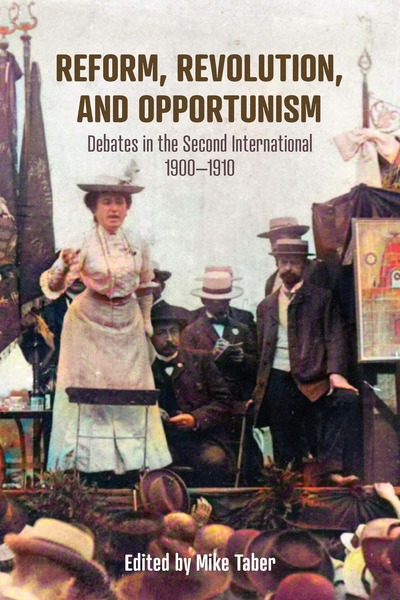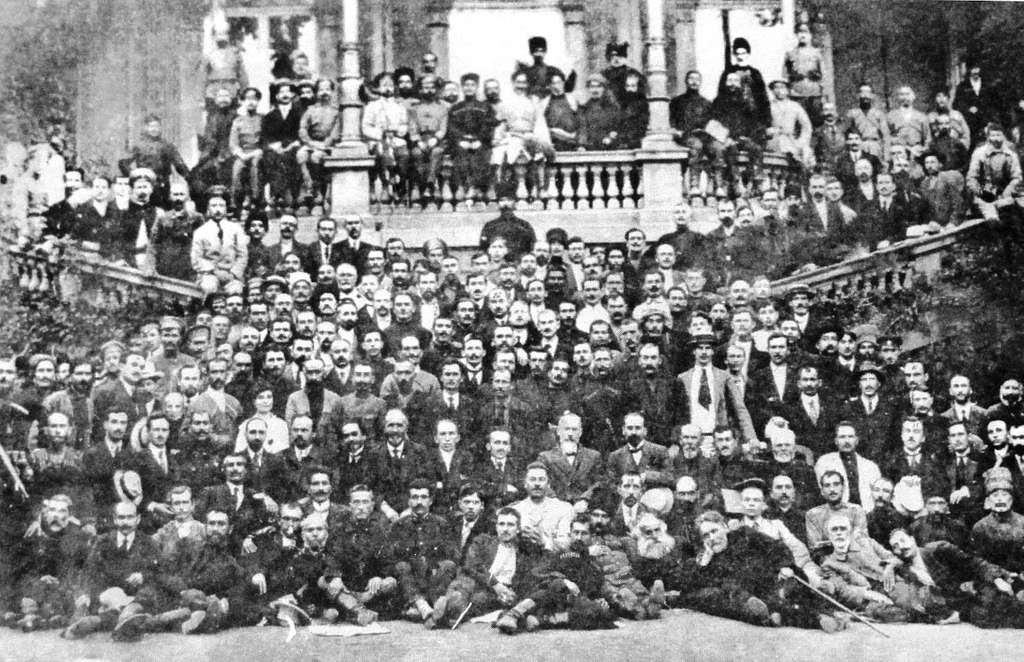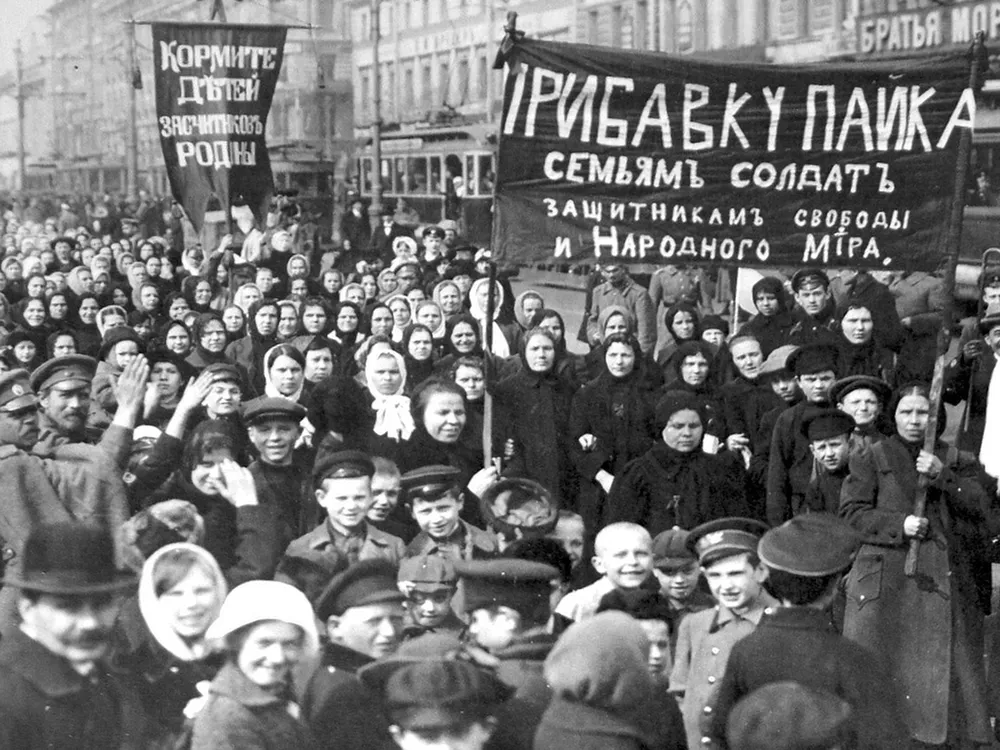Did the Left wing of the Second International foreshadow the politics of the Third?

Reform, Revolution, and Opportunism
Debates in the Second International, 1900–1910
by Mike Taber
Haymarket Books, 2023

The congresses of the socialist Second International brought together, for the first time, delegates representing mass workers’ parties. In the first ten years of the twentieth century, they debated questions that are still alive today, including reform and revolution, women’s and national oppression, war, and immigration. The discussions helped form and define the International’s Left, Right, and Center. Mike Taber’s new book presents a window on these developments through excerpts of oral debates at four of the International’s congresses.
In the following review essay, John Marot reflects on these debates and argues that the politics of the Third International, formed in 1919, did not just carry forward the positions of the Left wing of the Second. The Russian Revolution of 1917 changed what the Left thought about workers’ power.
The campaign to rehabilitate aspects of Second International politics and theory, associated with the work of Lars Lih, continues apace. Mike Taber’s collection of documents, Reform, Revolution, and Opportunism: Debates in the Second International 1900–1910, affords an excellent opportunity to review and examine Second International debates on the parliamentary road to socialism (‘Millerandism’), the colonial question, immigration, women’s rights, war and militarism.
The current, neo-Kautskyist consensus holds that the Third International independently consolidated and unified the “left-wing” of pre-1914 international social democracy. This consensus is real but mistaken. Understood as an integrated whole, Third International politics could not be derived from any trend in pre-1914 Social Democracy but rather required analysis of new experiences and institutions thrown up by the workers’ movement internationally in 1917, and in the years immediately following the October Revolution. That analysis could not arise from the unification of pre-1914 “revolutionary” social democratic trends into a separate organization foreshadowing the politics of the Third International as a whole.
Nor can Third International Marxism be accurately characterized as a mere reaffirmation of basic principles of socialist politics, valid at all times and everywhere: anti-racism, solidarity with immigrants, against militarism, for women’s rights, and against sectarian dismissal of electoral contests in bourgeois-democratic states. It was that, of course—but much more.
The first four Congresses of the Third International (1918-1922) appealed to all revolutionary social democrats of the Second International opposed to social democracy’s support for World War I. Its theses and resolutions took account of the fresh experience of the collapse of Second International national parties into war-mongering adjuncts of imperialist states, an (initially) successful workers’ revolution in tsarist Russia in 1917, and (contemporaneously) successful counter-revolutions in the West to generate among Third International Marxists a political synthesis superior to anything produced by Second International Marxism in its classical period, 1889-1914—above all in relation to the state.

State and revolution
The most outdated of Second International debates revolved around socialist participation—or not—in the executive branch of bourgeois democracies. This tactic was called “Millerandism,” after Alexandre Millerand, a French socialist who took a cabinet position in a bourgeois administration in 1899. Engels, writing in 1894, warned against the supreme danger: “After the common [electoral] victory we might be offered some seats in the new Government—but always in the minority. Here lies the greatest danger” (p. 16).1 But, Second Internationalists asked, what if socialists were in the majority?
The revisionists argued that Millerand’s participation in the government was fully in keeping with socialist participation in the capitalist state itself, which had been hitherto limited to its legislative branch, now simply extended to its executive branch. After all, socialist parties were winning elections and sending growing numbers of representatives to parliaments. Why not translate that growing parliamentary strength into representation in bourgeois cabinets and chancelleries as well? Indeed, once socialists acquired a legislative majority, some argued, they would be in a position to take not just one cabinet seat but many more—perhaps even enough to form a socialist-majority administration.
Theirs was an extremely persuasive argument because the revolutionary socialist argument against Millerandism, voiced by Engels, Kautsky, Lenin, Luxemburg, and Trotsky, never challenged the underlying premise, shared by both sides of the debate, that social democracy could lawfully command an arm of the bourgeois-democratic state—its legislative arm—to reform the capitalist state as whole and then proceed to socialism. The “day is approaching when the almighty English parliament will be a tool of the dictatorship of the proletariat” declared Kautsky in 1893, without meeting contradiction. 2 Kautsky reiterated this view in 1911, thereby establishing an overarching continuity in Second International Marxist thinking on the state.
Following Engels, Kautsky was clear that the parliament alone could do the job, supplemented by extra-parliamentary action in the likelihood the bourgeoisie resorted to an extra-parliamentary coup to frustrate the democratic majority. Hence, it was vital that social democrats scrupulously discuss Millerand and decide whether cabinet participation was warranted: A lone socialist cabinet minister could potentially stand in the way of socialist transition. Such participation was a question of tactics, Kautsky explained, and could not be automatically decided on the grounds of principle alone (19).
The two main factions of the Russian Social Democratic Labor Party (RSDLP) took different tacks on the controversy. As far as the Bolsheviks were concerned, the whole discussion around Millerandism, along with the policy ultimately adopted by the Second International on this question, was doubly irrelevant because there was no genuine parliament in tsarist Russia, and there was no socialist revolution on the agenda. Circumstances in this country were very different. There, in peasant-dominated Russia, the proletariat would destroy the Duma, together with the tsarist state, in the forthcoming RSDLP-led bourgeois-democratic revolution that would establish European conditions for political struggle in the first place. The Mensheviks disagreed.
The Menshevik-led Fourth Congress of the RSDLP held in the immediate aftermath of the defeated 1905 Revolution, adopted Kautsky’s “Erfurtian” politics, modified to suit Russian conditions. In a nutshell, the Mensheviks thought there had been a parliamentary breakthrough toward a bourgeois-democratic state—despite the defeat of the 1905 bourgeois-democratic revolution. The Bolshevik-led Fifth Congress, held in 1907, reversed the decisions of the Fourth on this matter—Lars Lih to the contrary notwithstanding—and reinstated the decisions of the 1905 Third (all-Bolshevik) Congress.
As far as Lenin and his partisans were concerned, tsarist autocracy remained intact because the 1905 Revolution had been defeated. As a consequence, the Duma could not be used to fully realize a bourgeois democratic state: the parliamentary road to bourgeois-democracy—(not socialism!)—was a non-starter in Russia. However, Lenin had no qualms about endorsing Kautsky’s Erfurtian politics where Erfurtian conditions of struggle were present, as in bourgeois-democracies. In the West, there was a genuine parliament, and Kautsky’s parliamentary road to socialism (not bourgeois-democracy!) flanked by non-parliamentary action if need be was feasible. In 1917, Lenin and the Bolsheviks jettisoned all this.
In State and Revolution, Lenin argued against the idea, central to Second International Marxism and shared by reformists and revolutionaries alike, that the workers’ movement could use any part of the state, whether capitalist or feudal, to effect a socialist transition. Instead, only a new state, a workers’ state built on soviet power outside of and on the ruins of the old state, could assure passage to socialism. The socialist revolution, whether in “advanced” or “backward” societies could never operate with any state form other than the Soviet form.
Lenin did not equivocate. Shortly after his arrival at the Finland Station in April 1917 he wrote:
The Russian Revolution has created Soviets. No bourgeois country in the world has or can have such state institutions. No socialist revolution can be operative with any other state power than this.3
This fundamental idea was not and could not have been foreshadowed, let alone expressed explicitly, by any Marxist before 1917, by Trotsky, Lenin, Luxemburg, Kautsky, or Engels. While Lenin had written in 1906 that the soviets of the 1905 Revolution had the potential to become a provisional revolutionary government, he did not think they could or should endure indefinitely as a workers’ state. In the following year, Trotsky wrote that he viewed soviets as a type of workers’ government, but neither he nor Lenin claimed that soviets were appropriate in countries that already had bourgeois parliaments. Lenin’s view of 1917 was new in its claim that soviet power would be crucial to all socialist movements.
The Third International thus decisively rejected the then-orthodox premise of a parliamentary road to socialism, whether or not supplemented with socialist ministers in the executive. Rightly so: The experience of the last century has repeatedly confirmed that social democratic governments adopt policies that never challenge capitalist relations of property and class; worse, in times of tumult and revolution, they have acted as a counter-revolutionary force outright.
Taber also documents Second International debates on colonialism, immigration, women’s rights, and militarism. On these points, as we shall see, the Third International did not break fundamentally with the views that Second-International revolutionaries had expressed in the Second.
The Colonial Question
The question no longer exists in its original form. American, European, and Japanese imperialism subjugated hundreds of millions in the ‘“Third World” to colonial rule. But once national liberation movements destroyed colonial rule itself—direct rule by capitalist states, whether bourgeois-democratic or not—Second International discussions around a ‘socialist colonial policy’ became moot.
Certainly, openly racist delegates advocating a colonial policy that was “socialist” would have been driven out of the Third International, but these arguments were heard in the Second. By a narrow margin, its Congresses called for the colonies’ qualified independence. The revolutionary trends went further and pushed for their unqualified independence as a matter of course, adding that the emancipation of the oppressed could only be realized through the self-activity of the oppressed themselves, and not by enlightened “socialist” paternalists leading the ‘“backward” populations to freedom. The Third International formalized this revolutionary perspective. It emphasized the elementary duty of socialists to actively support anti-colonial movements, a view Lenin and others had expressed sharply and many times long before 1914.
The debate on immigration
Then—and even more so now—the right to move in search of a better life is under attack. The 1907 Stuttgart Congress opposed all restrictions on immigration, and so did the Third International. As with the debate on colonialism, racist prejudices were widespread in the Second International, but advocates of the free movement of labor expressed solidarity with their fellow workers. Any self-respecting socialist today must agree. It requires no special study of Third International resolutions and theses which, broadly speaking, replicated those of the Second.

Women’s rights
Again, the Second and Third Internationals affirmed support for universal suffrage, opposing all invidious limitations to it on misogynistic grounds. Today, women’s emancipation is more broadly conceived, ramified, and detailed. Still, Clara Zetkin took the first steps and founded the Socialist Women’s Movement in 1908 to press for full social, political, and economic equality beyond the electoral arena. Thanks to its activity, the Second International issued a call to celebrate International Women’s Day, March 8. It is still celebrated today by millions around the world.
Militarism and war
The Second International made clear its opposition to inter-imperialist war. It unanimously adopted the following amendment, drafted by Lenin and Luxemburg at the Stuttgart Congress, explaining their duty to stop a world war:
In case war should break out notwithstanding, [socialists] shall be bound to intervene for its speedy termination, and to employ all their forces to utilize the economic and political crisis in order created by the war to rouse the masses of the people and thereby hasten the fall of capitalist class rule. (171)
In 1914, revolutionary socialists did their duty. With the exception of the Russian Social Democratic Party, the leaderships of all major social democratic parties did not, hounding their anti-imperialist opponents instead. Kautsky’s apologetics aided and abetted their campaign against them.
In 1911, Luxemburg expressed the strategic, revolutionary socialist perspective, ridiculing all disarmament and peace schemes:
To explain this to the masses, to ruthlessly scatter all illusions with regard to attempts made a peace on the part of the bourgeoisie and to declare proletarian revolution as the first and only step toward world peace – that is the task of the social democrats with regard to all disarmament trickeries, whether they are invented in Petersburg, London or Berlin. (132)
That task would fall to the Third International.
Conclusion
Third International Marxists never rejected the experience of the Second International, lock, stock, and barrel. Nevertheless, the permanent socialist solution to militarism, sexism, racism, immigration, and exploitation lies in the seizure of state power. In 1917, the issue of state power, that is, Soviet Power, was the crucial issue for all the others, Lenin explained in his April Theses. It remains true today. And it was here that the Third International, not the Second, made its mark: Soviet power was necessary to win socialism in bourgeois democracies (Leninist vanguardism)—a clear break with the parliamentary road to socialism (Kautskyism)—lately advocated by Eric Blanc and others.
In the past century the international workers movement has displayed the most variegated forms of struggle and organization, but nowhere have workers seized factories, organized factory committees, founding soviets commanding authority in the working class as a whole. Soviet power—that is what is missing (what else could it possibly be?)—and we have yet to figure out how to establish it.
We want to hear what you think. Contact us at editors@tempestmag.org.
John Marot View All
John Marot is the author of The October Revolution in Prospect and Retrospect: Interventions in Russian and Soviet History. His articles have appeared in specialist journals and in socialist publications, Jacobin, New Politics, Against the Current, Historical Materialism and others.
